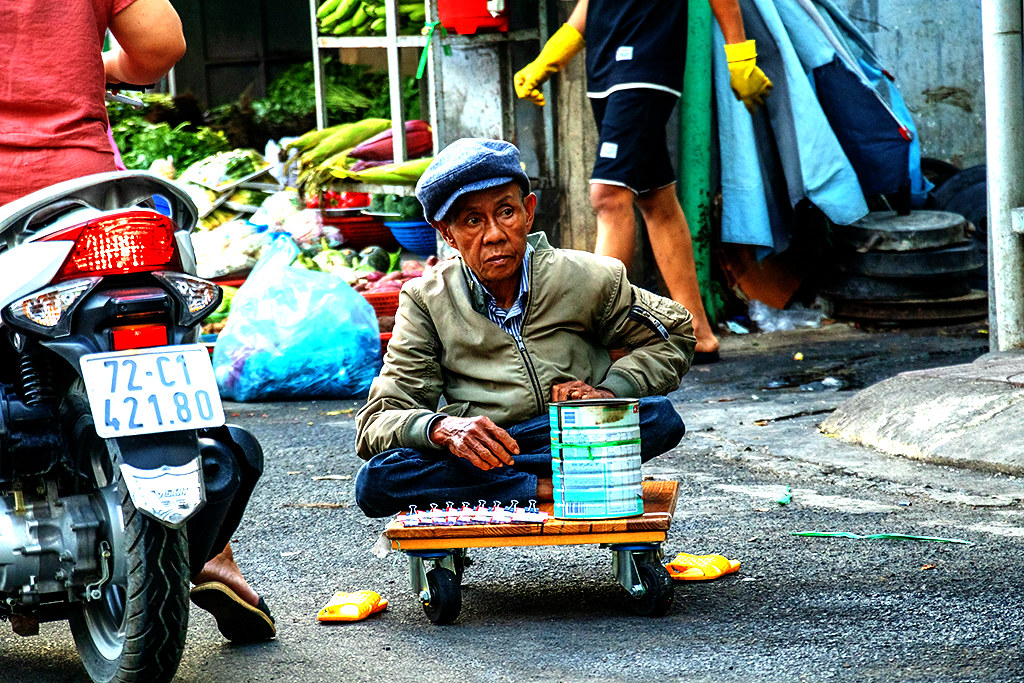Thomas Anshutz, The Ironworkers' Noontime, 1880
Sarah Stolfa was a bartender at McGlinchey’s. Photographing its regulars, she published a book that established her as an artist. Zoe Strauss was given a camera, so she photographed her neighbors in Pennsport, before foraying into Olde Richmond, East Kensington and Kensington, etc. Having no gallery, she taped her images onto the pillars of I-95 for her annual shows. In 2012, the Philadelphia Museum of Art staged Zoe Strauss: 10 Years. It then traveled to the International Center of Photography in NYC.
Even those paying close attention to American painting aren’t likely to recognize the name of Thomas Anshutz, but he inspired many regionalists who focused on ordinary subjects. Among his students at the Pennsylvania Academy of Fine Arts were Robert Henri, George Luks, John Sloan and Everett Shinn. These Philadelphians only made their name after relocating to NYC, however. Anshultz stayed put.
His most famous canvas is The Ironworkers’ Noontime. Debuting in 1880, it shocked viewers with its stark depiction of factory life. Still, the men are clean, muscular and even heroic. Real laborers were much more wretched. Thirty years later, workers at Bethlehem Steel went on strike for 108 days to demand one day off a week, a dressing room so they could go home in clean clothes and 15 or 20 minutes for lunch. Writing from the dark side of the moon, I can’t recall exactly their last request. I do have a corrido chronicling the recruitment of Mexicans to Bethlehem. Then, as now, immigrants were imported to keep wages down. A short excerpt:
Although realist painting remains strong in Philly, that focus on society’s bottom half has mostly been lost. There are no Joey Cheesesteaks in Sidney Goodman, Edith Neff or Larry Day, etc. Bo Barlett painted a deerhunter with his woman, son and pickup truck, but their gazes are distrustful, if not confrontational. Bo ain’t with them, and neither is the viewer.Yo me voy pa' Pensilvania Por no piscar algodón. Adiós, Fort Worth y Dallas, Por no de mucha importancia Yo me voy pa' Pensilvania Por no andar en la vagancia. [...] Cuando llegamos allá Y del tren nos bajamos, Preguntan las italianas, ¿De dónde vienen mexicanos? Responden los mexicanos, Los que ya saben “inglear,” "Venimos en un engache Del pueblo de Fort Worth." [I’m going to Pennsylvania But not for picking cotton. Goodbye, Fort Worth and Dallas, You’re not much to me now, I’m going to Pennsylvania To be a vagrant no more. [...] When we arrived there And got off the train, The Italian girls asked us, “Where do you come from, Mexicans?” The Mexicans reply, Those who know how “to English,” “We come out under contract From the town of Forth Worth.”]
To advance, most men gleefully kiss asses. To avoid punishment, they sidestep taboos. By natural inclination, they gravitate towards the beautiful, young and sexy, so anything that hints of decay, squalor or death, they avoid. On their walls they hang, if anything, pictures of flowers and babes. Regarding natural inclinations, Aquinas lists just four: life preservation, procreation, sociability and knowledge. In 2024, we must revise the last to avoidance of knowledge. That’s the strongest urge of contemporary man. We’ve evolved a long way from your dark days, Tommaso d’Aquino! Some Greek even said, “All men by their nature, desire to know”!
Marooned on a savage continent, Americans struggled to accrue culture. With Walt Whitman, they miraculously surpassed Europe. In painting, they had native flashes of genius in the Hudson River School, Albert Pinkham Ryder, Edward Hopper and the Chicago Imagists, with their overblown Abstract Expressionists given an extra push by the CIA. Singer, Whistler, Eakins, Homer, Wood, Benton, Bellows, Johns, Salle, Harriman, Crumb, Pettibon and a few others are all interesting, with Warhol, Lichenstein, Haring, Scharf and Baldesari fine, enduring jokes. No, I have not forgotten fascinating weirdos like Henry Darger or Bill Traylor. There’s also Philip Guston, but he’s Canadian. In photography, America has produced the very best, but I won’t burden you with more names. Who cares, though, what outsiders think, least of all some sweating bum in Vung Tau with his coconut?
Most succinctly, Grant Wood defended the local, “Great art works from the inside out—individual, regional, national, universal—not vice versa. We shall never produce a great national art or a lasting universal art by starting out consciously to do so. We have to start by looking inside ourselves, selecting our most genuine emotions.” Unlike most others, Wood didn’t seek his fame in the city. After studying in Chicago and Paris, Wood returned to Iowa. Not content to be a rural artist, Wood dressed like a farmer. Recent scholarship has suggested Wood appeared as a rugged man of the soil to mud mask his gayness. So be it. Wood’s message stands.
In a better world, each neighborhood would have its cherished painters and writers, so local delights, anguishes, scandals and fantasies would be aimed at local eyes and ears, in the most localized idioms.
Sober, unflinching art is extremely rare. Wood’s Iowa is nearly always idealized and stylized, to the point of kitsch, but his American Gothic is an enigmatic masterpiece. So open to interpretations, it’s endlessly parodied. Long after America is gone, it will be scrutinized as an emblem of this most promising of societies so thoroughly screwed over.
Digging deep, Wood revealed his truest self in the charcoal Saturday Night Bath (1937) and the lithograph Sultry Night (1939). Though his family would rather these male nudes not exist, art is the means to step outside social conventions. After Degas’ death, his brother destroyed many of his erotic drawings.
As a dime store provincial with no manual dexterity, I take the easiest way out by photographing what’s right in front of me! Just two days ago, I snapped a sunbaked, shirtless man teaching bottles of water how to read. From Cóc Cóc Coffee, where I’m sitting right now, I can see that very spot. It’s all about orientation.
Whitman said, “If you want me again look for me under your bootsoles.” Consider how vast Whitman was, everything is under your bootsoles, but you must look. We’ve been talking all along about living.
Bo Barlett, Young Life, 1994 Grant Wood, Spring in Town, 1941 Grant Wood, Farmer with Pigs and Corn, 1932 Grant Wood, Sultry Night, 1939 Drummer Magazine, circa 1985Drummer Magazine, circa 1985



















